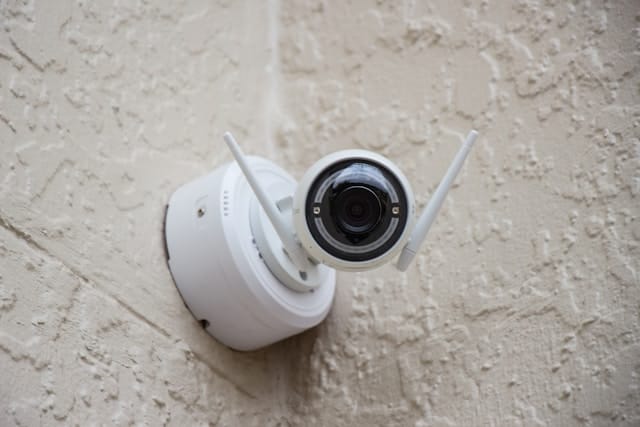How to Choose the Right Security Camera System for your Needs

A clear view around a home or business helps protect property and people with peace of mind. Cameras bring constant watchfulness and record moments that matter for safety and review. Simple choices in camera features, storage, and installation make a reliable setup that fits any space and budget. Intelligent choice of camera type, video clarity, data handling, power choices, and weather proofing creates a system that can perform reliably any time. Practical advice guides each step toward a security setup that feels strong, easy to use and ready for real-life needs.
Assessing Coverage Needs and Camera Types
Different camera styles serve specific areas and angles to cover every corner of a property. Fixed cameras point at a single spot and capture clear views of doors, windows, or driveways without moving parts. Rotating cameras sweep wide areas and adjust focus to follow scenes across yards or parking lots. Dome cameras hide the lens direction to deter tampering and suit indoor areas. Spot cameras with long lenses zoom in on distant objects for detailed views of gates or fences. Selecting camera types that match walls, ceilings, or poles ensures full coverage and easy mounting. Matching the field of view to the space size helps avoid blind spots. Simple choices in lens angle and rotation ability guide reliable monitoring that adapts to unique layouts and keeps every area in sight.
Understanding Video Quality and Night Vision
A high-definition video offers clear images, which capture faces, license plates, and even small images in the recorded video. 1080p resolution cameras offer smooth lines on their footage, and 4K offers additional clarity in large rooms or long-range shots. Night vision makes use of IR light to illuminate the scenes when lights have gone out and enables cameras to take clear images under low light. Good cameras have an automatic switch that changes daytime color capture and nighttime clear black and white recording. The sensors installed in the lights perform the same task of adjusting the brightness to prevent glare caused by the car headlights or the surrounding street lamps. It starts recording only when it senses motion and assists with storage. Clear video and reliable night vision work together to provide crisp footage twenty-four hours a day and support quick review when events demand close inspection.
Considering Storage Options and Data Access
A security camera system can store video on local devices or in online storage that keeps footage safe and accessible. Local storage records clips on network boxes or memory cards attached to cameras and holds data until space runs out. Cloud storage sends video over the internet to remote servers and keeps recordings for set periods, often with subscription plans. Local storage offers fast access to all files without internet delays and keeps private data within the home. Cloud storage provides secure backup and remote viewing from phones or tablets even when away from the property. Encryption protects footage in both local and online storage, and simple apps help search by date or event. Balancing cost, privacy, and access speed helps create a storage plan that fits daily routines and long‑term review needs
Evaluating Connectivity and Power Choices
Stable connections and a steady power supply keep cameras running without effort or interruption. Wired cameras use Ethernet or coax cables to send video and power through one link for constant performance. Wireless cameras link to home networks via Wi‑Fi and remove cable runs but need strong signal strength to avoid dropouts. Battery‑powered cameras offer placement flexibility where wires are hard to run and recharge on a schedule or swap batteries when needed. The solar powered models fill batteries using sunlight and reduce manual charging. PoE cameras (power over Ethernet) are those that mix the data and the power in a single data cable that allows easy installation and quality connections. Aligning connectivity style with home design and bandwidth can support uninterrupted, high-definition video, and prevent downtimes when they are most crucial in surveying issues.
Checking Installation Flexibility and Durability
Outdoor and indoor cameras deal with varying environments and continue functioning in adverse weather. Weatherproofing ratings (like IP65 or IP66) are used to verify resistance to dust and to rain when mounting on gardens, roofs, or parking areas. Temperature‑rated cameras operate in summer heat and winter cold to record clearly year‑round. Metal housings resist vandalism and keep lenses safe from knocks or tampering. Adjustable mounts allow precise aiming toward entryways, walkways, or play areas to capture the best angle. Indoor models fit flush to ceilings for neat installation in hallways or offices. Simple mounting brackets and plug‑and‑play designs speed up setup and let installations finish in hours, not days. Durable materials and flexible mounts help cameras stay secure, focused, and ready for daily use.
Conclusion
Picking the right security setup balances clear coverage, solid video quality, reliable storage, and steady power to create a watchful system that lasts. Smart choices in camera style, resolution, data handling, connectivity, and build quality help craft a solution that fits every space and need. Simple planning and attention to key features lead to a setup that delivers constant monitoring and peace of mind. A well‑chosen camera setup stands ready to capture each moment and support safety in homes, workplaces, or anywhere protection matters.

Source: How to Choose the Right Security Camera System for your Needs




